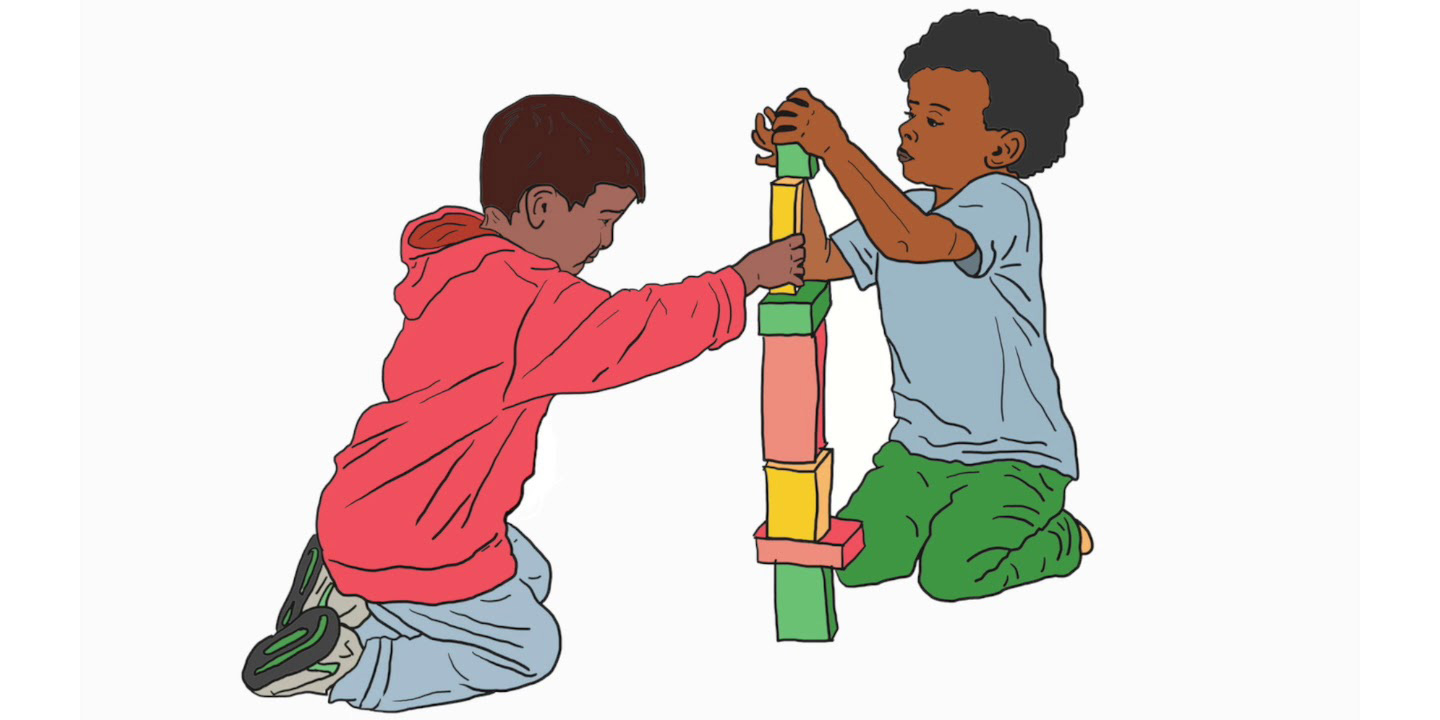Did you hear the one about the marine biologist who walked into a neuroscience lab?

The University of Washington’s Institute for Learning & Brain Sciences brings together experts in psychology, neuroscience, computer science, radiology and more. Breakthrough research is the institute’s raison d’être, but it also prioritizes putting its findings into the hands of people who can use it.
And that’s where the marine biologist comes in. Marley Jarvis, Ph.D., used to study plankton at the bottom of the Gulf of Mexico in a submersible, but two years ago she made the switch to I-LABS. “Scientists follow their curiosity,” she says.
(In case you’re wondering, plankton, the most prevalent animals on earth, don’t have brains, but some do have nerve cells.)
“Cooperating with other people is a key achievement in child development and is essential for human culture. We examined whether we could induce 4-year-old children to increase their cooperation with an unfamiliar peer by providing the peers with synchronized motion experience prior to the tasks.
continue reading…Dr. Jarvis has a special interest in neuroplasticity, a phenomenon she summarizes with the simple but thrilling statement: “We’re literally shaping our brains as we experience life.” Neuroplasticity, which is especially strong in young children, plays a starring role in the short video that she directed, narrated and illustrated (yes—a scientist who can draw. Remind you of anybody?)
The video came together in seven days. It had to, in order to make the deadline for the American Psychological Association’s Psychological Science Video Festival & Competition (PsycShorts, for short). Dr. Jarvis brought her colleagues together to shine a light on “Synchronized movement experience enhances peer cooperation in preschool children,” a study by I-LABS’ Tal-Chen Rabinowitch and Andrew N. Meltzoff that was published in The Journal of Experimental Child Psychology.
The study points to a correlation between “synchronized movement”—think of activities like marching and clapping together—and working cooperatively. The video shows children jumping on a trampoline while holding hands as well as swinging on swings in unison, which is the activity used in Rabinowitch and Meltzoff’s study. Similar effects chronicled by the study starts as early as 14 months of age.
👉 Dig deeper: “All Together Now: The Universal Appeal of Moving in Unison” (Scientific American, April 2009)
“Given the visual nature of the research method,” Dr. Jarvis says, “It made sense to go beyond words.” At the same time, the limitations of a short video required being selective about what to show and what to leave out. “There are 10 different stories you can tell,” she says.
Inspired by the tight deadline, the I-LABS team stuck with simple but engaging drawings and a concise narration. “The contest was a good excuse to try something new,” she says. In June, PsycShorts named it one of this year’s 12 winners.
“Preschoolers worked solo on some math puzzles, and those that were told they were part of a team (no other children were actually present) said they enjoyed the puzzles, persisted longer and actually got better scores. The ‘belonging’ feeling was fostered by giving them a team shirt, showing a poster with other children on their team, having a team flag, etc.
continue reading…When asked about the implications of the synchronous movement study, Dr. Jarvis says, “Humans are greatly influenced by the social experiences we have with others. We’re learning quite a bit about what goes into behavior.” These insights help us move beyond inaccurate and, ultimately, damaging preconceived notions about kids being “good” or “bad.”
What happens when a child is labeled “bad”? A Center for American Progress study found that 50,000 preschoolers were suspended at least once in 2016, and another 17,000 were expelled. (Check out ZERO TO THREE’S resources on preschool expulsion.)
Dr. Jarvis recognizes that academics don’t have all the answers to the problem. “Parents and teachers have expertise that we don’t,” she says, “but we’ve found that research and day-to-day experience really complement each other.”
She views the study as more than a neat trick for preschool classroom management. It demonstrates, she says, that synchronous experience can make us feel like someone else. And that, she says, is the beginning of empathy.

Mark Swartz
Mark Swartz writes about efforts to improve early care and education as well as developments in the U.S. care economy. He lives in Maryland.



